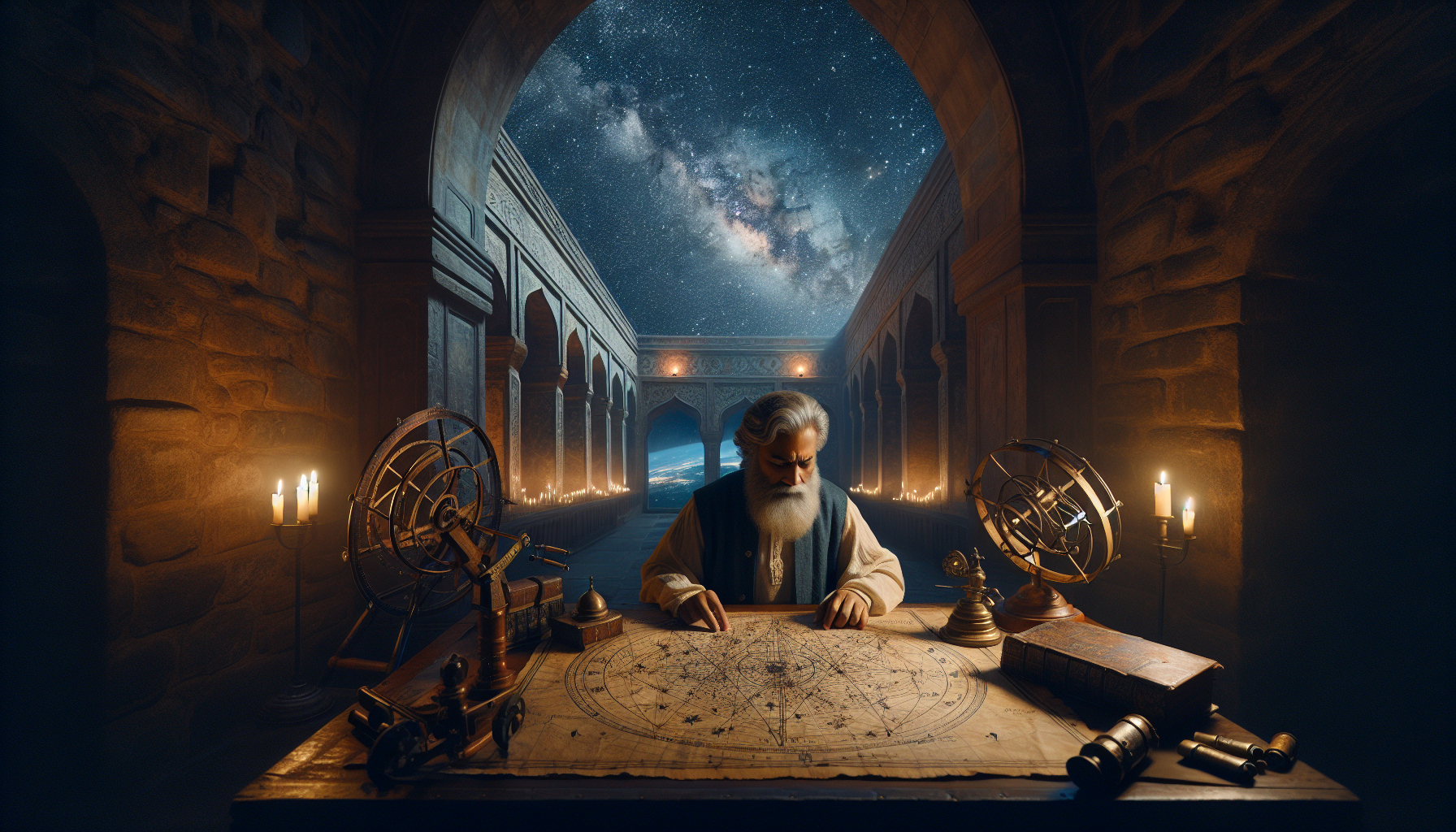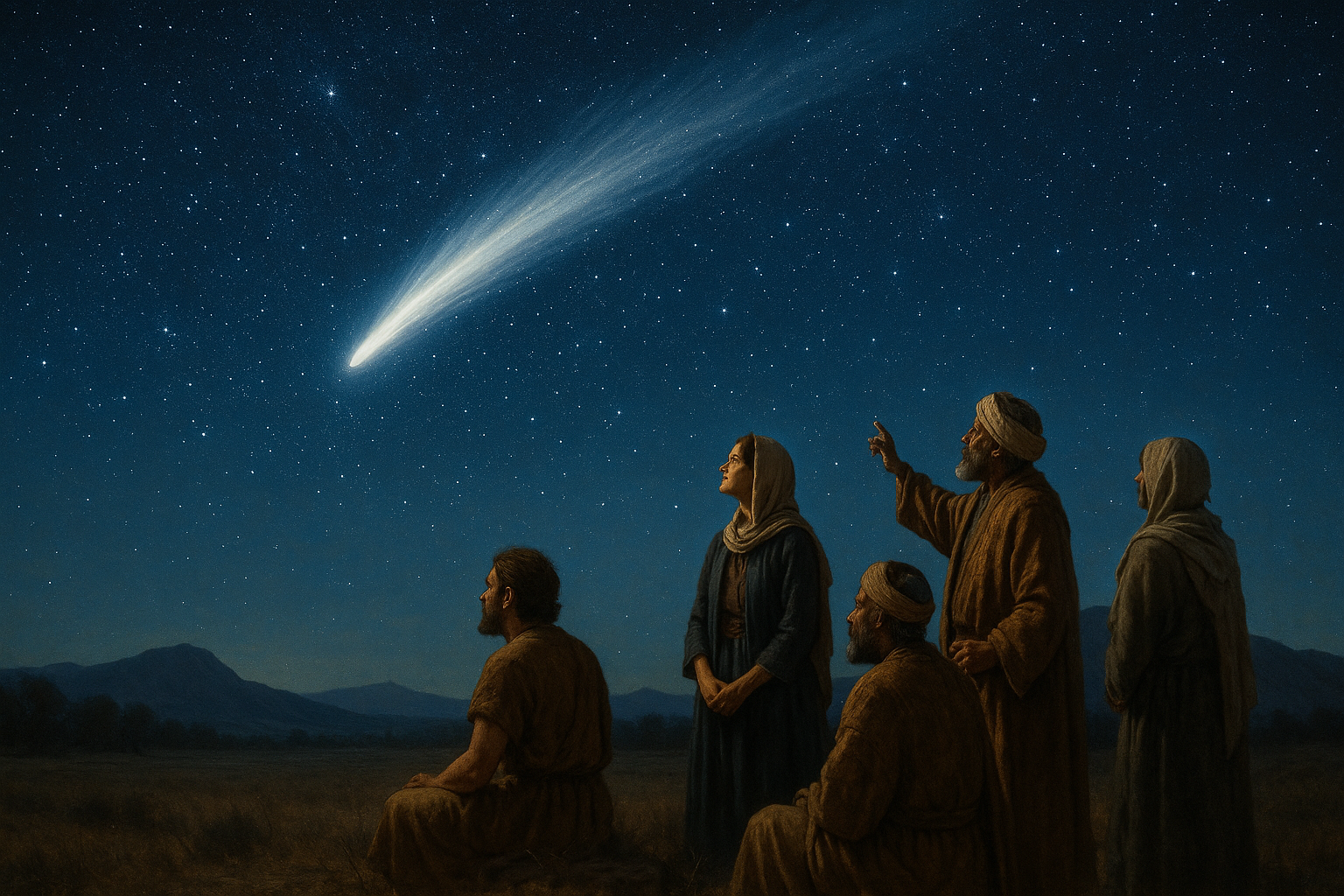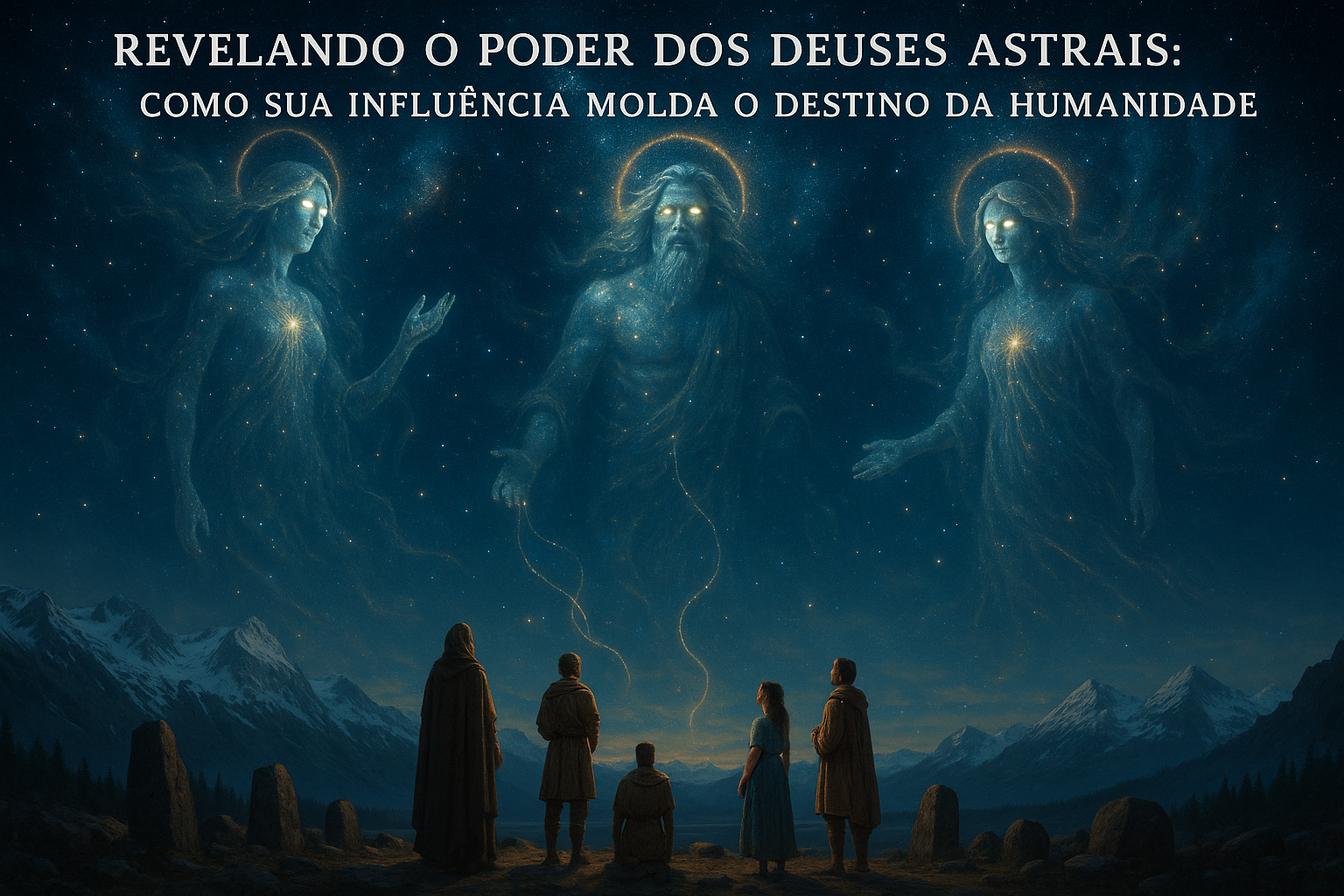The night sky has always been a canvas of mystery and wonder, inviting humanity to gaze upward and contemplate the vastness of the cosmos. 🌌 For millennia, people across cultures have sought to understand the celestial bodies that adorn the heavens, marking their movements and crafting intricate narratives about their significance. In this exploration of early star charts and their captivating origins, we embark on a journey through time, delving into the ways our ancestors unlocked the mysteries of the universe long before the advent of modern astronomy. The story of these ancient maps is not just one of scientific curiosity, but also of cultural expression and the enduring human desire to find our place in the cosmos.
In our quest to understand these early star charts, we will traverse the rich tapestries of ancient civilizations, from the Babylonians and Egyptians to the Chinese and Greeks, each contributing to the collective knowledge of the night sky. We’ll uncover how these early astronomers meticulously observed the stars, recorded their positions, and constructed maps that would guide not only navigation but also philosophical and religious beliefs. The interplay between mythology and astronomy will reveal how stories of gods and heroes were etched into the celestial sphere, serving as a bridge between the earthly and the divine. As we unravel these stories, we will see how the cultural, scientific, and artistic legacies of these civilizations continue to influence our understanding of the stars today.
Throughout this article, we will examine the tools and techniques that early stargazers employed to chart the heavens, from primitive observatories and rudimentary instruments to sophisticated mathematical calculations. We’ll explore the evolution of these techniques and how they laid the groundwork for the scientific revolution that would follow. Moreover, we’ll consider the broader impact of these star charts on society, including their role in navigation, agriculture, and the development of early calendars. By the end of this journey, we hope to illuminate the remarkable ingenuity and creativity of our ancestors and inspire a renewed appreciation for the night sky, encouraging readers to look up with a sense of wonder and curiosity, just as those early astronomers did.✨
The Origin and Importance of Early Star Charts
For millennia, the stars have been a guiding force for humanity. Our ancestors looked up at the night sky, mapping the constellations and using these celestial bodies for navigation, timekeeping, and even spiritual guidance. Early star charts represent some of the most profound achievements in human history, illustrating our innate desire to understand the universe. These charts were the precursors to modern astronomy, providing a foundation upon which later scientists would build.
The earliest star charts are believed to have originated in Mesopotamia, a region that was a cradle of civilization. These ancient astronomers, often priests, meticulously recorded the positions of stars and planets. The Babylonian star catalogues, dating back to 1200 BC, are among the oldest known. These early astronomers were keen observers of celestial movements and recorded their findings on clay tablets, marking the dawn of astronomical documentation.
As you delve deeper into the history of star charts, it’s fascinating to see how different cultures approached the task of mapping the heavens. The ancient Chinese, for instance, created detailed star maps that differed significantly from those of their Western counterparts. By 400 BC, Chinese astronomers had cataloged over 800 stars and had a deep understanding of celestial mechanics. This knowledge was crucial not only for navigation but also for agricultural planning and predicting celestial events like eclipses.
Comparative Analysis of Ancient Star Charts
| Civilization | Key Characteristics | Period |
|---|---|---|
| Babylonian | Use of zodiac constellations, recorded on clay tablets | 1200 BC |
| Chinese | Cataloged over 800 stars, utilized for timekeeping and navigation | 400 BC |
| Greek | Introduction of mathematical models to predict celestial movements | 300 BC |
As the table illustrates, while there are commonalities in the pursuit of celestial mapping, each civilization brought its own unique perspective and methodology. The Greeks, for instance, introduced mathematical models that allowed for more accurate predictions of celestial movements, which was a significant advancement over earlier observational methods.
Watch this video about ancient star maps by the channel “Star Gazer” to explore more about these fascinating origins. 📽️
The Role of Star Charts in Navigation and Culture
Star charts have played a crucial role in the development of navigation techniques, especially for seafaring civilizations. The Polynesians, for example, were master navigators who used the stars to voyage across vast expanses of the Pacific Ocean long before the advent of modern navigational tools. By observing the rising and setting of specific stars, they could determine their position and direction.
In ancient Egypt, the stars were integral to the culture and religion. The Egyptians developed a calendar based on the heliacal rising of Sirius, which coincided with the annual flooding of the Nile. This event was critical for agriculture, making star observation an essential aspect of survival and prosperity.
Similarly, in the Islamic world, star charts were used to determine the qibla, or the direction of Mecca, for prayer. This necessitated a deep understanding of celestial mechanics and led to significant advancements in astronomical knowledge. These examples highlight the profound influence star charts have had not only on navigation but also on cultural practices.
Star Charts and Modern Astronomy
The legacy of early star charts is evident in modern astronomy. With the development of telescopes and more precise instruments, our understanding of the universe has expanded exponentially. However, the principles laid down by ancient astronomers remain foundational.
- Discover the evolution of star charts from ancient to modern times.
- Explore the cultural significance of celestial mapping across civilizations.
- Learn about the impact of early star charts on navigation and astronomy.
The journey from early star charts to modern-day astronomy underscores the enduring human quest to unravel the mysteries of the universe. While our methods have evolved, the stars continue to inspire and guide us in our exploration of the cosmos. 🌌

Conclusion
In conclusion, the exploration of early star charts and their fascinating origins offers a window into the intricate relationship between humanity and the cosmos. Throughout this article, we’ve embarked on a journey through time, uncovering the myriad ways in which ancient civilizations documented and interpreted the night sky. From the Babylonians to the Greeks, and from the Chinese to the indigenous peoples of the Americas, each culture brought its unique perspective to celestial mapping, demonstrating both the diversity and the universality of our quest to understand the universe.
Firstly, we delved into the historical context that gave rise to the first star charts. These ancient maps were more than mere artistic representations; they were practical tools that served agricultural, navigational, and ceremonial purposes. The Babylonians, with their ziggurats, observed the stars meticulously, laying the groundwork for future astronomical endeavors. Similarly, the Chinese developed sophisticated lunar calendars, using star patterns to align their agricultural activities. These early examples underscore the intrinsic link between celestial observations and the very survival of ancient societies.
Next, we examined the technological advancements that propelled the creation and refinement of star charts. The Greeks, with figures like Hipparchus and Ptolemy, advanced the precision of these charts, integrating mathematical calculations and the geocentric model of the universe. This period marked a significant leap in astronomical knowledge, setting the stage for future breakthroughs during the Renaissance and beyond. Such innovations highlight the relentless human curiosity and the drive to comprehend the cosmos, which continues to inspire modern scientific endeavors.
Furthermore, the article explored the cultural and mythological dimensions embedded within early star charts. Constellations were not merely clusters of stars; they were storied figures, each with a narrative that reflected the values, beliefs, and imaginations of the cultures that named them. The Greek myths, the stories of the Aztec and Maya, and the star lore of Indigenous Australians illustrate how humans have always sought to find meaning in the stars. This blending of science and storytelling adds a rich layer to our understanding of these ancient maps.
Importantly, we also touched upon the enduring legacy of these early star charts in contemporary astronomy. Modern technology, such as telescopes and spacecraft, allows us to explore the universe in unprecedented detail. However, the foundational principles laid down by early astronomers continue to guide our explorations. The star charts of old serve as a testament to the enduring human spirit of inquiry and exploration, reminding us of our shared heritage as stargazers.
As we reflect on these key points, the significance of studying early star charts becomes evident. They are not only relics of the past but are also vital to our ongoing exploration of the universe. By understanding the origins and evolution of celestial mapping, we gain insight into the broader narrative of human knowledge and curiosity. These charts remind us of our place in the cosmos and our perpetual quest to unlock its mysteries.
In light of this, I encourage you, dear reader, to delve deeper into the history of astronomy. Whether it’s through visiting a local observatory, participating in a stargazing event, or simply looking up at the night sky, there is much to be discovered and appreciated. Sharing this knowledge with others can spark conversations and inspire a new generation of explorers and thinkers. Feel free to comment with your thoughts or share your own experiences with star gazing. 📜🌌
For those interested in further exploration, reputable sources such as NASA’s Jet Propulsion Laboratory, the European Space Agency, and educational platforms like Khan Academy offer a wealth of information on astronomy and the history of star mapping. These resources provide additional layers of understanding and are invaluable for anyone looking to deepen their knowledge of the cosmos.
In closing, let us celebrate the legacy of early star charts and their creators, whose ingenuity and wonder continue to guide us as we reach for the stars. The cosmos remains a vast and uncharted territory, but with each discovery, we add to the grand tapestry of human achievement. Let this article be a stepping stone on your own journey through the universe, inspiring you to explore, learn, and share the wonders of the night sky. 🌠
Toni Santos is a visual storyteller and cosmic interpreter whose work illuminates the ancient skywatchers and their prehistoric astronomy—the profound ways early humans observed and revered the heavens before written history. Through a visionary lens, Toni explores how the stars, planets, and celestial cycles shaped myth, ritual, and survival in cultures lost to time.
Rooted in a fascination with archaic observatories, stone alignments, and celestial symbolism, Toni’s creative journey reveals the deep human impulse to understand and harmonize with the cosmos. From lunar phases guiding planting seasons to the sacred paths of the Milky Way, each of his works embodies the awe and knowledge encoded in the night sky.
Combining artistic craftsmanship with archaeological insight, Toni’s pieces evoke the mystery and precision of prehistoric astronomers. His work does more than depict—it channels the timeless dance between earth and sky, bridging ancient wisdom with contemporary wonder.
As the visionary behind Vizovex, Toni shares curated visuals, essays, and symbolic studies that invite others to reconnect with the cosmic heritage written in stone and starlight. His creations are a call to look upward, to listen to the silent stories told by the stars, and to honor the first astronomers who mapped the heavens with reverence and ingenuity.
His work is a tribute to:
The celestial wisdom of prehistoric peoples
The sacred geometry of ancient observatories
The enduring bond between human culture and the cosmos
Whether you’re a stargazer, a scholar of ancient mysteries, or someone captivated by the universe’s earliest storytellers, Toni welcomes you to journey through a space where the sky is both map and myth—one constellation, one ritual, one revelation at a time.




